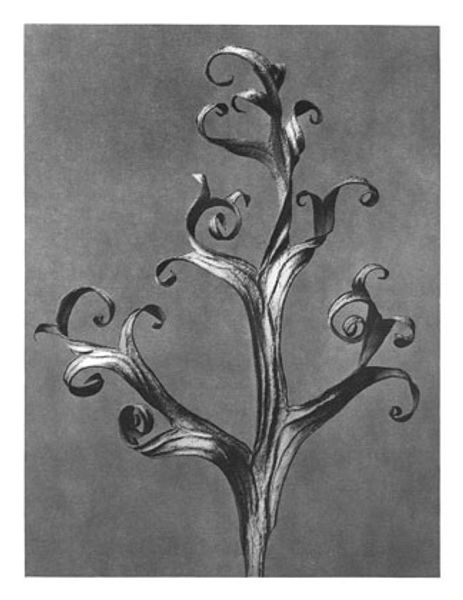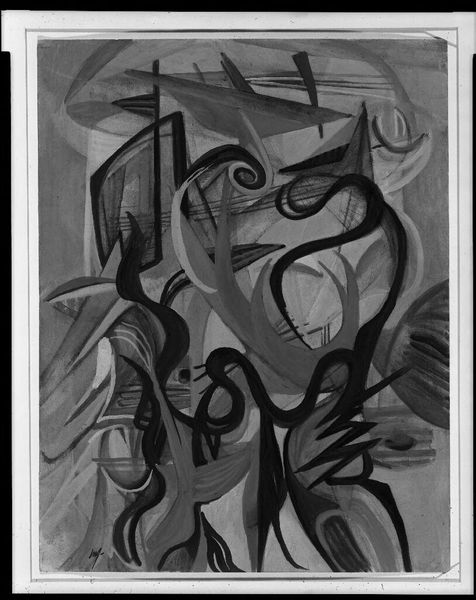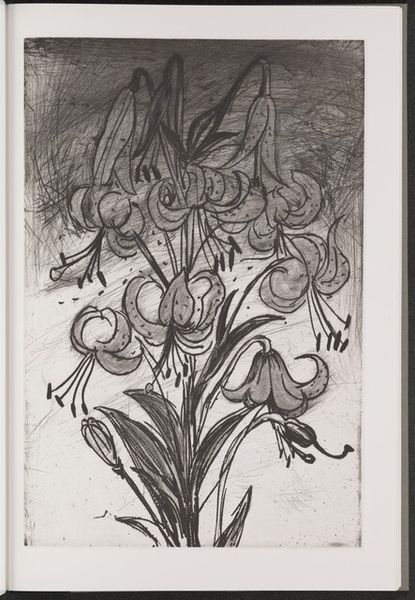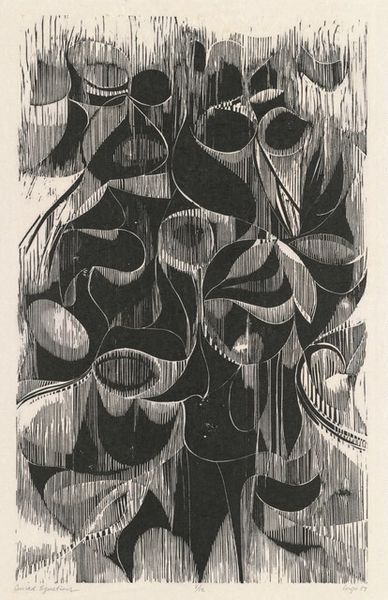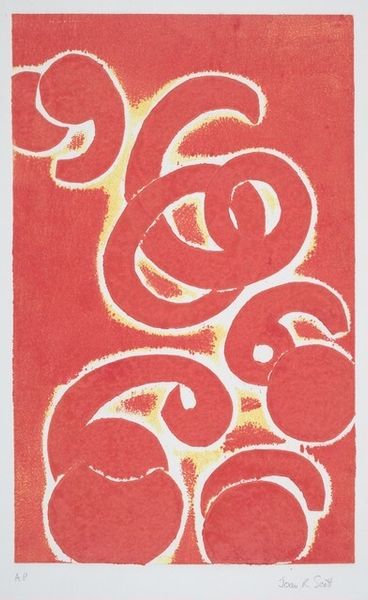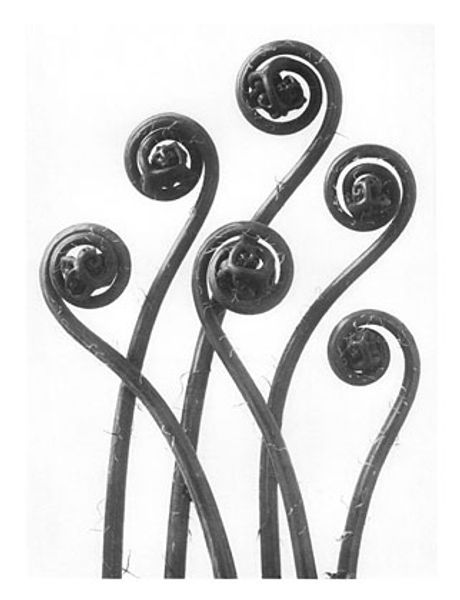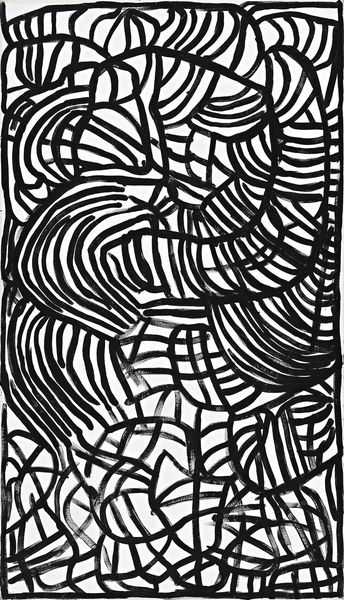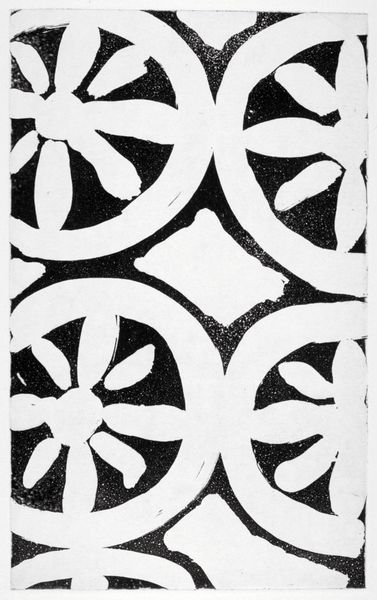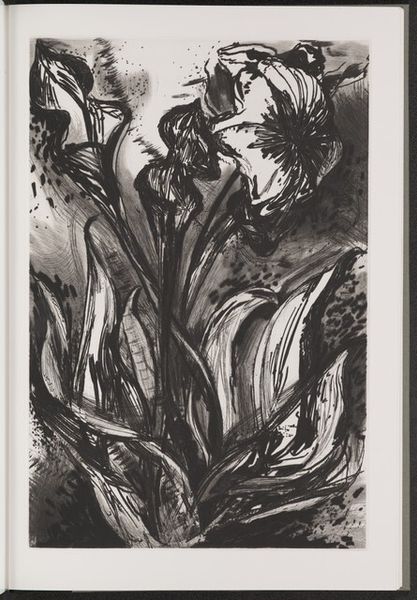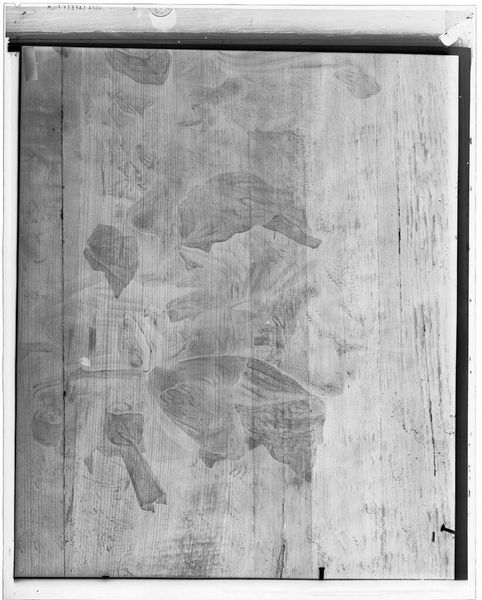
Copyright: Public domain
Editor: Here we have Karl Blossfeldt's "Art Forms in Nature 45," a gelatin silver print from 1928. The composition immediately grabs me. The curling shapes of the plant are so graphic and bold against the flat background. What strikes you when you look at this image? Curator: Indeed. Note how Blossfeldt frames the organic forms with an almost mathematical precision. The lines are crisp, the contrast stark. There’s an undeniable tension between the natural subject matter and the meticulous presentation. Observe the interplay of positive and negative space, and how each element contributes to the overall formal structure. Editor: So you're saying that the beauty isn't just in the plant itself, but in how he’s arranged and presented it? Curator: Precisely. We can examine this print and begin to extract meaning without needing external context. The beauty emerges from the internal relationships: line, form, texture, and their dialogue across the surface. Consider how the repetitive swirling shapes create a rhythmic visual experience. What philosophical resonance might such repetition invoke? Editor: It’s like he's revealing the hidden architecture within nature. I usually focus on the meaning *behind* the work, but seeing it this way highlights the importance of visual elements alone. Curator: Agreed. Through careful observation of these formal qualities, we are invited to consider the artwork on its own terms. Hopefully, that has provoked your thinking, and possibly offered a new perspective. Editor: Absolutely, it has. Thanks for pointing out all the hidden features.
Comments
No comments
Be the first to comment and join the conversation on the ultimate creative platform.
